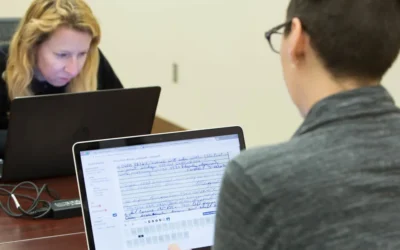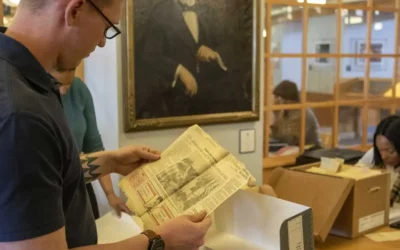Information Seeking Behavior in Archives
Margot Note
Archival activities begin with developing a collecting policy, then move to acquiring collections and entering them into recordkeeping systems through accessioning, arrangement, description, preservation, and access. Where does the creation of finding aids, and access tools of all sorts, fit into this process?
Is it the end of the processing phase in terms of bringing materials under bibliographic and physical control? Or is it framed with the user in mind, as part of reference services? How do archivists consider how their patrons approach their collections?
Some Considerations
Before examining the information-seeking behavior of archival researchers, it is essential to consider certain factors. The research world changes quickly, and with the impact of technology, the ability to keep current becomes difficult. It is challenging to keep the pace as an information professional, and even more difficult for scholars who are balancing their subject matters and new tools.
The uniqueness of each institution, despite increasing standardization, makes information-seeking challenging. Another factor is the uniqueness of collections—with each being one-of-a-kind. Even within a repository, systems change over time, and retrospective updating is not always performed.
Another factor is the records-centered nature of archives with an emphasis on provenance and original order. Archivists tend to orient their systems around the records and expect researchers to be able to understand and find information within these systems. Working in a face-to-face environment may make things easier but may not with remote research. This traditional approach to archives is not user-oriented and can be intimidating to researchers.
Researcher Expectations
Researchers tend to base their information-seeking behavior on what they expect to find. They may assume that everything is cataloged or available through a single access point. They may also expect that everything is online and presume item-level access. Researchers do not always distinguish, or know how to distinguish, between primary and secondary sources. Archivists may lack the skills and training to explain how to use archival holdings or to address these assumptions head-on.
Research Approaches
Uses for primary sources can be as varied as archival holdings. Scholarly use dominates, but non-scholarly use is also important and often overlooked.
Information seeking preferences vary. Some people enjoy browsing or reading. Other chase footnotes or citations. Others ask their colleagues for leads. Still, others depend on search engines, OPACs, ArchiveGrid, and other discovery systems.
A nonlinear research approach is typical. Some research, for example, is iterative. The more a researcher knows about the subject, the more he or she finds. Developing that knowledge base takes time. Some researchers are looking for a known item, while others are taking a more explorative approach.
Researchers do not naturally connect their information needs to the hierarchical structure of archives. For most researchers, provenance-based finding aids are less than optimal, even though the context that provenance maintains is essential for understanding the records.
Researchers vary on the acceptable quantity of material to access. How much of a collection is a researcher willing to go through? In information retrieval, this is referred to as the balance between precision versus recall. How ready are researchers to wade through unprocessed collections? Or those which have been processed minimally using archivists Mark A. Greene’s and Dennis Meissner’s “More Product, Less Process” approach?
More User-Centered Approaches
Archival systems are set up to expect researchers to be able to connect subjects to proper names. While subject access is more common than it used to be, it is easier to find and provide access points for proper names. Access by place name and date is necessary, too, and finding aids should emphasize these facts as well.
Archival holding systems also tend to be complicated, which is one of the reasons why the staff needs to know the collections as well as the peculiarities of the repository access system, but also need to understand the user’s perspective. Empathizing with and embodying the user experience and their information-seeking behaviors allow archivists to deliver records of enduring value that will support research, pedagogical, and personal projects.
Margot Note
Margot Note, archivist, consultant, and author is a guest blogger for Lucidea, provider of ArchivEra, archival collections management software for today’s challenges and tomorrow’s opportunities. Read more of Margot’s posts here.
Similar Posts
Collaborative Archival Relationships
Collaborative projects are instrumental in showcasing how archival collections can benefit various organizational departments.
Informational, Evidential, and Intrinsic Values within Archives
Archives provide authentic, reliable information and hold values that reflect their functions and uses; informational, evidential, and intrinsic.
A Sustainable Archives
Archivists prioritize sustainable practices and policies, rooting their work in ethics of care, often preferring digital processing and preservation
Archival Branding and PR Strategies
Archivists who adopt branding and PR strategies both safeguard historical treasures and contribute to their organizations’ evolution.




Leave a Comment
Comments are reviewed and must adhere to our comments policy.
0 Comments